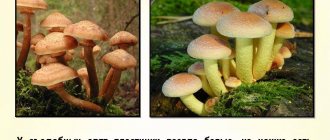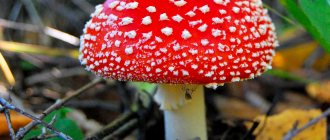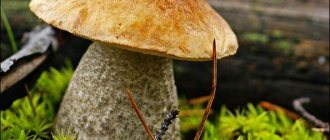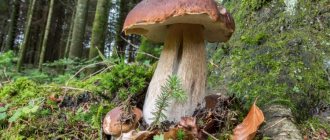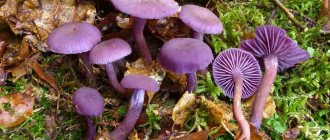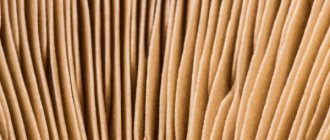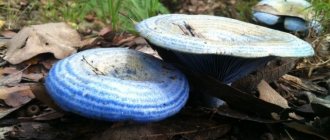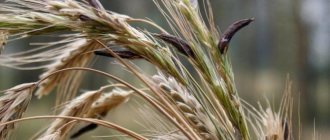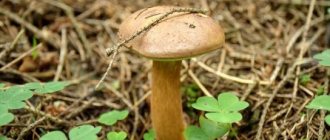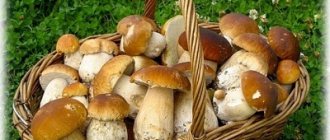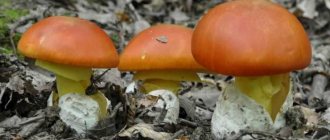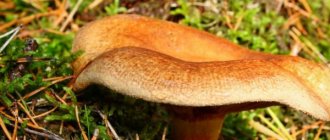In nature, there are predatory fungi that hunt and feed on small living invertebrate organisms. Widely distributed in all climatic zones. Representatives of predatory fungi are classified according to the structure of the trap organ. Most are imperfect fungi (hyphomycetes), zygomycetes and some chytridiomycetes. The vital activity of these organisms is beneficial to humans. To protect crops from nematodes, preparations from spores of predatory fungi have been developed. Application in agriculture reduces soil infestation with nematodes by almost 35%.
Predators have great practical benefits for humans, acting as a biological means of combating pests when growing vegetables. Predatory fungi develop better and more actively catch soil nematodes if there is an additional source of energy (sugar, other compounds) in their habitat. Among edible specimens, oyster mushrooms are recognized as an example of predatory mushrooms. But some species can cause diseases that are dangerous to health.
History of appearance
The history of its appearance goes back about 30 million years. The time of origin is estimated approximately, based on studies of the remains found in pieces of amber. In the process of evolution, the most ancient specimens went through several rebirths, modifying the forms and adaptations of fishing and digestion systems of living organisms. The differences between predatory mushrooms and other species by type of nutrition are shown in the table.
| Predators | Kill and eat the victim |
| Saprophytes | They feed on organic matter from dead organisms |
| Symbionts | Obtain organic substances from symbiosis with other organisms |
| Parasites | They feed on organic matter from living organisms |
Killer mushrooms are very ancient creatures. It is difficult to name the exact time of their appearance on earth. Mostly they are found in small pieces of amber. This is how an ancient fossil carnivorous mushroom was found in France. This specimen fed on worms up to 5 millimeters long. However, scientists believe that this prehistoric mushroom is not the ancestor of modern species. In the process of evolution, predatory mushrooms were reborn many times, so modern predators are not relatives of prehistoric predators.
Sundew
The sundew's trap mechanism is even more elaborate than that of the butterwort. The shiny glandular hairs on the leaves (thanks to which the sundew got its name) are longer than those of the sundew, but the mechanism of operation is identical. The glands produce nectar to attract insects, sticky mucus to trap them, and enzymes to digest them.
Flies and other insects land on the leaves to drink dew and stick, then the leaf curls up and absorbs the prey. This rather long process can take up to several hours, but the victim will not go anywhere - it is firmly glued to the sheet.
Characteristic
It all started with the fact that in the 19th century, Russian scientists M. S. Voronin and N. V. Sorokin, conducting research virtually in parallel, noticed rings on the mycelium of some species - but for what reason remained unknown until 1888. This year, the German scientist F.V. Zopf, after conducting a series of studies, found that these strange formations serve to catch microscopically small soil nematode worms. The remains of representatives of the species were discovered in amber.
Nowadays, predatory fungi are classified as a separate ecological group. Previously, they belonged to saprotrophs. This fact is explained by the fact that if there was no opportunity to profit from living organisms, they can also feed on dead organic matter.
Distributed everywhere. They grow on old stumps, mosses, rhizosphere and plant roots. They love stagnant bodies of water. They are found on soils, in manure and organic residues. Release toxins.
The vegetative mycelium of predatory fungi usually consists of branching septate hyphae no more than 5-8 microns thick. Chlamydospores often form in old hyphae. Traps of various structures develop on the mycelium. Often, predatory mushrooms capture animals in their traps that are much larger than the hunter. The size of nematodes that can be caught as food is 0.1-1 mm, and the thickness of the hyphae is no more than 8 microns (1 micron = 10-6 m). Catching such large prey was made possible by the emergence of various trapping devices in the process of evolution.
In addition to nematodes, they prey on amoebas or other small invertebrates, but such species are less common. Food can include microorganisms such as rotifers, small crustaceans and roundworms. The predator first kills the prey, and then absorbs nutrients, the most valuable of which are nitrogen and phosphorus, necessary for normal life. They differ from parasitic species in that they do not settle on other organisms.
What are they?
Representatives of the genus of mushrooms that catch and kill representatives of the animal world are called predatory; of course, we are also talking about their miniature species. These organisms are classified into a special ecological group, which mycology has identified according to their feeding method.
Predators can also be considered saprotrophs, since in the absence of the opportunity to prey on animal organisms, they are completely satisfied with dead organic matter.
Predatory mushrooms live mainly among the roots of plants or in old stumps, mosses, and in stagnant bodies of water; there are also specimens that parasitize insects and feed on their flesh.
Predatory mushrooms are also called hunters, because in order to catch prey they have to perform certain manipulations.
There are organisms that can shoot spores to kill a victim, with a flight range of up to a meter. Once in the body, the spore begins to germinate and feed on it.
But that’s not all, there are other types by which they are classified. Examples of predator mushrooms:
- Monacrosporium ellipsosporum, which have round heads with a sticky substance on the mycelium, with which they capture their prey;
- Arthrobotrys perpasta, Monacrosporium cionopagum – their trapping apparatus is represented by sticky branched hyphae;
- Arthrobotrys paucosporus has a trap in the form of an adhesive network, which is obtained as a result of the ring-shaped branching of hyphae;
- Snow-white dactylaria has a mechanical device for capturing the victim, with the help of which the microorganism is grasped, compressed, as a result of which it dies and becomes food.
Representatives of predatory fungi adapt with lightning speed to any changes in the environment.
Based on this, it is quite reasonable that they have existed since prehistoric times, although since then they have evolved and changed more than once.
Today, hunting mushrooms are ubiquitous. They are perfectly adapted to any climate zone. Predators include primarily representatives of imperfect fungi.
The role of predator fungi in the biocenosis
Predatory fungi, in the absence of prey, develop as saprotrophs, feeding on organic compounds and assimilating mineral nitrogen compounds like other saprotrophs. In the soil, predatory fungi compete with other organisms. Accordingly, predatory fungi can be considered as an ecological subgroup of soil saprotrophs. Predatory fungi are of interest to humans in connection with the fight against nematodes, which are pathogenic for plants, animals and humans.
Where do they grow?
Predatory mushrooms are found in all climatic zones. They easily adapt to changing weather conditions and are not at all afraid of temperature changes. The most common habitats include:
- Stagnant bodies of water.
- Dung heaps.
- Old stumps.
- Organic remains.
- Rhizomes of plants.
- Rhizophere layer of soil.
Many types of predatory specimens are invisible to the human eye. Some of them can only be seen with a microscope.
There are many more predators from the kingdom of fungi than plants.
How mushrooms lie in wait for their prey
Using the example of predatory mushrooms that arrange their sticky rings, let’s look at how prey is obtained.
As the organism grows, it covers the soil with a large number of rings of hyphae. They gather in a network and surround the mycelium. As soon as a nematode or other small animal comes into contact with this ring, instant adhesion occurs and the ring begins to crush its victim and after a few seconds hyphae penetrate the body and devour it from the inside.
Even when the nematode managed to escape, after contact there will already be hyphae in it, which grow at lightning speed and feed on flesh, as a result, within a day, only the shell remains of the prey.
The same principle is used to hunt microorganisms living in water bodies. Special outgrowths act as traps that catch victims. Through them, hyphae penetrate into the body, which completely destroy it.
The famous oyster mushroom also feeds on microscopic worms. And she catches them with the help of a toxic substance, which is produced by accessory hyphae from the mycelium. Under the influence of toxins, the worm falls into a paralyzed state. The oyster mushroom digs into it and absorbs it. However, it should be noted that the fruiting body itself does not produce or contain toxic substances.
Mycologists consider predatory fungi as a special ecological subgroup, since in the absence of animal food, they feed on organic matter, assimilating mineral nitrogen compounds.
All types of predatory fungi are of interest as a means of controlling nematode pests.
A distinctive feature of this peculiar group is its special way of feeding - predatory. They catch and kill microscopic animals using special trapping devices. Predatory mushrooms are widespread across the globe. Most representatives of the group are imperfect (hyphomycetes), but this also includes zygomycetes and some chytridiomycetes.
Insectivorous Nepenthes
About one hundred and fifty species of tropical insectivorous plants of the Nepenthes species live in Southeast Asia, the Philippines, Borneo, Sumatra, New Guinea, Sri Lanka and the west coast of Madagascar. Some of them are quite large in size and can catch and digest various animals, including small vertebrates.
Three species found in the rainforests of Borneo that resemble a toilet bowl are Nepenthes lowii, N. rajah, and N. macrophylla. In addition to using trapping leaves that grow on the ground around them to trap and digest small animals, some have toilet leaves located above the ground.
Nature invented these “toilets” as a kind of perch for a small mammal, the common tupaya, which licks the sweet nectar produced by the plant. To reach the nectar, the tupaya needs to climb into the hole in the trap leaf. The rain will wash the prey into the bowl, where the plant will digest it and receive the necessary amount of nitrogen.
Varieties of representatives
The names of predatory mushrooms include several dozen species. Representatives are divided into groups, depending on the devices for catching small animals:
- branching hyphae with a sticky substance - protrusions are formed in species growing in water bodies;
- sticky round heads on mycelium;
- the adhesive mesh, which appears as a result of the branching of hyphae in the form of rings, dissolves the cuticle of nematodes and penetrates their flesh;
- mechanical trap - mycelial cells increase, the lumen of the ring closes, the victim is compressed, which leads to its death.
They often form a trap when the victim is nearby. They are formed at the moment when the body needs food or water. Sometimes nematodes can escape from a trap, but after such contact they will no longer live.
Division into groups by type of traps
The victims of predatory fungi are usually saprozoic nematodes or free-living larvae of nematodes pathogenic to plants, animals or humans. Often predatory organisms catch animals that are much larger than the hunter himself. The size of the nematodes (roundworms) that they are able to catch is 0.1-1.0 mm, and the thickness of the fungal hyphae is no more than 8 microns (1 micron = 10-6 m). Catching such large prey was made possible by the emergence of various trapping devices in the process of evolution.
The traps available in the structure of mushroom predators, which they use to catch invertebrates, are diverse. For fishing, they use loops, heads with adhesives, and rings.
The structure of sticky traps depends on what predatory mushrooms feed on. They are conventionally divided into 3 types:
- Undifferentiated lateral outgrowths of hyphae, covered with an adhesive substance.
- Trapping devices with oval or spherical sticky heads located on short two-cell mycelium branches.
- Adhesive networks consisting of a large number of rings. They are formed from multiple branching and intertwining threads of hyphae. Such networks often reach large sizes and the probability of large prey (nematodes) getting into them is very high.
In addition to these main types of hunting devices, some predatory mushrooms are characterized by traps in the form of rings without an adhesive substance on their surface - with a mechanical method of catching based on mechanical squeezing of the trapped living organism. In the simplest case, they act passively - the prey simply gets stuck in them. But there is also a more interesting option - contracting rings, when the nematode is actively grasped by the hyphae of a predatory fungus, which swell, almost completely closing the lumen of the ring.
Description of the hunting process
Mushroom hunters
The process of predation occurs differently depending on the structure of the traps.
Thus, many soil fungi have trapping rings formed in their mycelium, which they use to catch nematodes:
- as soon as the worm gets into this ring, it begins to actively try to get out of there;
- with his every movement, the mushroom mycelium covers him with tangled threads of hyphae, covered with a sticky substance;
- a process, the infectious bulb, penetrates from the fungal body to the nematode;
- through the expansion at the end of the bulb, the predator dissolves the cuticle, penetrates the nematode’s body and begins active growth in the cellular structure;
- as a result, fungal hyphae fill the entire cavity, and this happens in just a day.
Even if a large nematode copes with the hyphal threads and manages to get out, it is doomed to death: the remains of fungal hyphae penetrate inside its body and quickly lead to death.
Other methods of hunting (using mechanical fishing). For example, dactylaria has ring-shaped outgrowths formed by mycelium threads. Each ring contains 3 cells that are highly sensitive to touch. When a living organism gets into the loop, the rings swell and their size increases 3 times. The threads pull the victim tightly, achieving its death, grow into the internal cavity and gradually digest it.
Studies have shown that the death of caught nematodes or the cessation of their movements occurred before the mycelium of the fungus penetrated into the body of the victim. It has been suggested that predatory fungi synthesize toxins that are part of the sticky liquid of the trap. They were called nematotoxins. They have been found in many predatory species of hyphomycetes.
Some predators hunt in the aquatic environment, mainly on amoebas, forming hook-like outgrowths that act as bait. When a living organism swallows it, the fungus gets inside and begins sucking and digesting the victim from the inside.
Examples of predatory mushrooms
The vegetative mycelium of predatory fungi consists of abundantly branching septate hyphae no more than 5-8 microns thick. Chlamydospores are often formed in old hyphae. Various trapping devices develop on the mycelium, described below. Conidia in predatory fungi develop on vertically standing conidiophores of various structures and have one or more septa. The first conidium is formed blastogenically at the apex of the conidiophore, then a new growth point appears in its niche and a new conidium develops.
This process is repeated many times, resulting in the formation of a cluster of conidia at the apex of the conidiophore, often thickened and warty. If the conidiophore proliferates at one of the successive growth points and this process is repeated, a series of thickened nodes containing conidia are formed on the conidiophore. In addition, predatory hyphomycetes include representatives of the genera Tridentaria and Tryposporina (Tprovrogsha) with star-shaped spores and other fungi. Sometimes nonspecific induction of the development of traps is observed by extracts from animal tissues, blood serum, CO3 ions and other influences.
In the culture of some nematodes, substances were discovered that stimulate the formation of traps in predatory hyphomycetes and were called nemin. It is believed that this is a low molecular weight peptide or amino acid. A protein with non-minic activity was obtained from the body of roundworms. In some predatory hyphomycetes, for example, in Arthrobotrys dactyloides (A. cactylous fungi), the development of traps occurs in the absence of nematodes under conditions of relative lack of water or nutrition of predatory fungi.
Perhaps in nature, these factors, along with morphogenetic compounds such as nemin, regulate the formation of traps in predatory fungi.
Predatory mushrooms (predatory mushrooms) are mushrooms that catch and kill microscopic animals using special trapping devices. This is a specialized ecological group of fungi, distinguished in modern mycology by the way fungi feed - the food is microscopic animals captured by fungi. They may be classified as saprotrophic fungi that feed on dead organic matter, since in the absence of prey they feed like saprotrophs.
Some mushrooms hunt in water. the filaments of the mycelium form outgrowths in the form of rings of three cells that respond to touch. If a nematode accidentally gets into such a loop, they swell three times in a tenth of a second and pull the victim so tightly that it dies.
Then the threads of the fungus grow inside the victim and digest it. Predatory mushrooms can be classified according to the type of trap. The first type of traps are hyphal outgrowths covered with a sticky substance. The second type of traps are oval or spherical sticky heads sitting on mycelium branches. People seem to use it on the farm (vegetable garden).
Definition of autotrophic and heterotrophic organisms
Autotrophic organisms feed on organic substances that they form themselves. Autotrophs are capable of photosynthesis. They absorb carbon from carbon dioxide, using solar or chemical energy, and form ready-made organic substances (more: How external factors influence the process of photosynthesis).
Heterotrophic organisms use ready-made organic compounds of animal and plant origin, which contain potential energy; they themselves are not capable of forming organic matter.
Autotrophic organisms
Autotrophic organisms include all green plants, from unicellular algae to higher plants. To obtain food, they use the energy of sunlight - these are photosynthetics, as well as photosynthetic bacteria (purple) and bacteria that can use chemical energy to absorb carbon dioxide.
Chemosynthetics
The assimilation of carbon dioxide through chemical energy, in contrast to photosynthesis, is called chemosynthesis.
Chemosynthetics include nitrifying bacteria that oxidize ammonia to nitric acid, iron bacteria that oxidize ferrous salts to oxide salts, and sulfur bacteria that oxidize hydrogen sulfide to sulfuric acid.
Producers
Autotrophic organisms capable of synthesizing organic substances from inorganic ones are called producers.
Heterotrophic organisms
Other organisms absorb carbon from ready-made organic compounds and are classified as heterotrophs. This includes all animals except the one-celled Euglena green, which is both an autotroph and a heterotroph. Among plants there are also exceptions that are capable of feeding both autotrophically and heterotrophically, for example:
- sundew,
- rafflesia flower, (more: Adaptation of plants to pollination),
- pemphigus,
- Venus flytrap, etc.
Saprophytic organisms
Heterotrophs include saprophytic organisms, which are divided into:
- saprophytes, (from the Greek “sapros” - rotten), using carbon from dead organic compounds;
- parasites (from the Greek “parasitos” - parasite), using carbon from the living body of other organisms.
For example, fungi are saprophytes that feed on dead organic debris, decomposing them. These include:
- molds,
- cap mushrooms.
Saprophyte molds include:
- mukor,
- penicillium,
- Aspergillus
Saprophytic cap mushrooms include:
- dung beetle, (more details: Spring mushrooms)
- raincoat,
- champignon, etc.
Saprophytes belong to the category of decomposers.
Parasitic fungi include:
- ergot,
- smut,
- tinder,
- late blight.
From an ecological point of view, heterotrophs are classified as consumers. There are consumers of the 1st order - these are exclusively phytophages, that is, animals that feed on plant food (producers) and consumers of the 2nd order - predators that eat consumers of the 1st order.
Loading…
Not to be confused with parasitic Cordyceps
Cordyceps is a member of the ergot family. The parasitic fungus is often mistakenly classified as a predatory species. Grows in the Tibetan highlands about 4 km. In the warm season, fungal spores penetrate the larva of one of the butterfly species (Hepialus armoricanus). After winter comes the growing season. The spores germinate to form mycelium.
Author's comment
Anastasia Rodionova
Biologist by training and an avid mushroom picker
Ask a Question
Cordyceps mushroom has the ability to affect the host insect. The body of the mushroom resembles a dry blade of grass in appearance. A mature mushroom looks like a dried yellow-brown caterpillar with a dark brown knot.
The habitat of this parasitic fungus for almost 50 million years is the tropical forests of the African continent, Brazil and Thailand, as well as the highlands of Tibet. It creates its own mycelium in the body of ants, caterpillars, and butterflies, feeding on them and mummifying them. Let's consider its life cycle using the example of Cordyceps unilateral, which parasitizes carpenter ants.
This fungus, like others, is spread by spores. An insect infected with its spore serves as a source of nutrition for the fungus: the spore grows into its body, takes root inside it and parasitizes on it until the mycelial hyphae reach the maturity stage. The size of the developed mushroom exceeds the size of the host several times, and the host itself first changes its properties and then dies. The main object that Cordyceps unilateral chooses are carpenter ants of the species Camponotus leonardi, which live in trees.
You can read more about the Cordyceps mushroom here.
Full bloom
Mushrooms reached their full flowering in the Tertiary period (about 76-25 million years ago) of the Cenozoic era, in which we live. During this period, judging by fossil finds, all the main groups of fungi now known already existed.
The question of the place of mushrooms in the complex system of the living world cannot yet be considered completely resolved. Only further research by scientists - systematic botanists, biochemists, geneticists and other scientists, armed with the latest research methods that make it possible to study the finest structures of the fungal cell and the characteristics of metabolism in it, will give a final answer to this question.
Mushrooms in everyday consciousness are associated with ideas about decay, plant diseases, in other words, with the negative aspects of the life of organisms
At the same time, available materials indicate that mushrooms are extremely important in the life of nature. The decomposition of organic matter, often called putrefaction, is an extremely important process that occurs in nature. For example, in the forests of the Khanty-Mansiysk Autonomous Okrug, the main part of the biomass - about 90 percent of plants - is processed and destroyed with the participation of bacteria, invertebrates, and fungi
However, it is fungi that are the leading group and determine all the most important characteristics of these processes.
Oyster mushroom
The oyster mushroom is a type of oyster mushroom that grows on the trunks of dying and dead trees and destroys them. The wood is rich in cellulose and lignin but low in nitrogen, so this insidious fungus secretes a chemical lure to attract its prey, roundworms.
When a worm crawls onto a mushroom, the mycelium filaments release a toxin and paralyze the victim. Then enzymes are released that penetrate the body of the worm and the digestion process begins.
Not everyone knows, but oyster mushrooms are also predatory mushrooms; they happily eat unwary worms. Like other predatory mushrooms, hyphae bloom in the mycelium of oyster mushrooms. The hyphae produce a fairly powerful toxin. The poison instantly paralyzes the victim, and the hyphae digs into it. The oyster mushroom then slowly digests the victim.
Not only nematodes are sensitive to the poison of oyster mushrooms, called ostearin; these fungi can prey even on fairly large relatives of earthworms - enchytraeids. Oyster mushrooms also pose a danger to oribati mites that happen to be nearby.
Examples
Predatory fungi in most cases are mostly representatives of imperfect species, which are combined into a group called Hyphomycetes, as well as Zygomycetes and some Chytridiomycetes, representatives of other taxonomic groups. These include:
- Arthrobotrys;
- Dactylaria;
- Monacroporium;
- Tridentaria;
- Tryposporin.
Oyster mushroom feeds on bacteria
Examples of predators:
Orbilia: It grows in rotting wood. Reminds me of red buttons. Its hyphae burrow into the soil to hunt. Some champignons also have this ability.
Oyster mushroom: grows on wood that cannot provide it with the necessary amount of nitrogen. The species is edible. Its mycelia form hyphae that secrete the toxin ostearin. It has a paralytic effect on nematodes (round soil worms), relatives of earthworms - enchytraeids, and oribatid mites. A mushroom that has caught its prey releases enzymes. The digestion process begins. Toxins are not present in the fruiting bodies, so they are suitable for consumption.
Arthrobotrys is an insectivore: it lives on the surface of the land, has adapted to catching representatives of springtails, or springtails, using a trap that can capture an insect.
dung beetle
Another representative of edible mushrooms is the ubiquitous dung mushroom. It self-dissolves (digests itself) to release a slippery, black liquid mass within 4-6 hours after the spores separate or after it is picked by a mushroom picker. This process can be prevented if the mushrooms are sautéed or placed in cold water. In the video above you can see the whole process.
Roundworms (nematodes) have more nitrogen than they need because they have a bacterium that retains it. They release most of the nitrogen in the form of ammonia, which is why they become victims of fungi. The dung fungus preys on only two types of nematodes - Panagrellus redivivus and Meloidogyne arenaria; upon contact with it, the processes on the body of the fungus strike the worm, the cup catches the prey and presses on it, as a result the contents of the insides come out. This mechanism, combined with a cocktail of poisons, kills the victim in a few minutes. The threads of the mycelium penetrate into his body and digest the remains of the flesh.
Pemphigus
More than two hundred species of the genus Utricularia live in small freshwater bodies and marshy soils on all continents except Antarctica. And all of them are carnivores. These plants are one of the few that do not have a stem or leaves, but only a flower and a trap bubble. This mechanism is present only in this plant species.
The bubble creates a kind of vacuum, pumping liquid from the inside out by contracting the walls. The trap is sealed with sticky mucus, which prevents water from penetrating inside. This mucus contains carbohydrates, which attract prey.
When a small crustacean or any other suitable prey touches the hairs of a predator, the “mouth” opens and the plant sucks in water along with the prey. All this happens at lightning speed, in about 0.001 seconds. The trap is instantly sealed, the plant spits out the remaining water and calmly digests the prey.
Arthrobotrys oligospora
The fungus Arthrobotrys oligospora is an anamorphic (vegetatively reproduced) fungus and does not produce a fruiting body. It builds a sticky network of rod- and ring-shaped elements that adhere to the nematode's skin through a chemical reaction. Lectin (a special protein on the surface of the mesh) reacts with the secretion on the worm's skin, forming a bond that cannot be destroyed. No matter how hard the worm resists, it will not be able to get out.
As you know, the most common nematode-hunting fungus, A. oligospora, lives in soil, animal feces, and even in fresh and salt water, where it feeds on the products of rotting plants. Sticky networks appear only when there is a potential victim nearby, which the fungus identifies by smell. Worms secrete pheromones, with the help of which they communicate with each other, control their numbers and determine the location of their fellows. Thanks to this secret, Arthrobotrys oligospora can save its energy and not build networks in vain.
Different types of fungi respond to different sets of enzymes, depending on the type of nematode they prefer. But it's not that simple. Certain bacteria produce large amounts of urea, which ends up in the soil and fungi, which absorb it. The fungus converts urea into ammonia, which takes part in the creation of adhesive networks. Urea also attracts worms, which increase in number as they feed on the bacteria. The bacteria produce more urea, which stimulates the fungus to create more networks and regulate the number of worms. Thus, the bacterium organizes its protection from pests. In addition, this is beneficial for the fungus itself, since the worms produce the nitrogen it needs.
Zhiryanka
Insects in search of water land on shiny drops of butterwort secretion and stick tightly
The butterwort plant of the genus Pinguicula uses a mechanism for attracting prey like sticky tape for flies: on the surface of the leaves there are hair-like glands that secrete sparkling drops of mucus. These droplets attract insects that are looking for water.
Insects land on the leaf and stick. The insect's attempts to get out create vibration, and the leaf slowly curls up, absorbing prey and releasing more mucus. Special glands then secrete enzymes to digest the prey. The products of the digestion process are absorbed into the plant through holes in the surface of the leaf. Such holes are unusual for plants; thanks to them, butterworts are susceptible to dehydration.
Their brightly colored flowers with sweet nectar inside are located at the top of the stem, so pollinators are not trapped in the leaves, which are closer to the ground to attract midges, mosquitoes and other insects.
Dreschlerella anchonia
Some types of predatory fungi, for example, Dreschlerella anchonia, hunt their prey using a lasso formed from three cells with a special compound, forming a ring with a diameter of 0.03 mm. The nematode crawls into the ring and breaks the line of least resistance on its inner wall. The osmotic pressure inside the ring draws in the liquid, and in a tenth of a second the volume triples. The ring pinches the victim, not giving her a chance to escape. It often happens that due to the resistance of the victim, he gets stuck only in the second ring.
After the victim is caught, the mushroom secretes a secretion that digests it alive from the inside. The ancestors of these mushrooms existed 100 million years ago in southwestern France. They are believed to have lived during the Cretaceous period alongside dinosaurs and flying reptiles. But, unlike their contemporaries, the ring was formed from a single cell and was narrower (about 0.015 mm).
Carnivorous plants that prefer insects
Carnivorous plants form leaf traps—tall, hollow, tube-like cups containing a mixture of acidic water and a surfactant. Their insect-catching leaves resemble flowers that turn purple-red due to the pigment anthocyanin, which is also responsible for the color of autumn leaves. Near the hole in the trap, the leaves produce sweet nectar that attracts flies, ants, beetles and other insects.
The vertical walls of the trapping leaf are covered from the inside with slippery wax, which helps the victim slide into the pool of water below. If the prey manages to jump out of the pool, it hits the walls of the trap and falls back into the water. A special secretion keeps insects at the bottom, where they are slowly digested. The process is accelerated by a bacterium that lives in this liquid and produces additional enzymes.
About a thousand species of similar plants live in the swamps of eastern North America, and twice as many of their relatives of a slightly different family in South America, some of them are found in Northern California and Oregon.
The benefits of carnivorous mushrooms for humans
There are nematophagocyte preparations created on the basis of a strain of a predatory hyphomycete fungus that fights mobile larvae and cysts of the parasitic nematode worm, a pest that attacks agricultural crops. According to the manufacturers, the effect of application is as follows:
- the reduction in soil infestation by nematodes in greenhouses under the influence of the drug reaches 86%;
- the stimulating effect of the biological product on plant growth and development has been established;
- reduction in potato nematode infestation in susceptible varieties is 52-70%, improvement in presentation;
- the biological product effectively fights strawberry stem nematode; the number of nematodes in the leaves, compared with the control group, is reduced from 2 to 17 times, the fraction of large berries in the harvest increases by 5-17%.
Operating principle: predatory fungi are natural enemies of nematodes. The fungus lures nematodes with attractants and forms traps into which it captures the pest. By destroying nematodes and being in the soil, fungi release nutrients and maintain ecological balance. Also, during plant germination and growth, the nematophagous fungus has a positive effect on the root system of the plant.
The biological product fights all stages of nematode development - mobile larvae and protected cysts, without causing resistance in the pest, does not pollute the soil with toxins and does not have a negative effect on beneficial organisms. These hunting mushrooms are an alternative to toxic chemicals, the use of which not only pollutes the environment, but also the parasites themselves do not adapt to their effects, so the effectiveness of the drug is not reduced.
Practical use
Predatory fungi are used to control nematode pests.
When growing vegetables and champignons, biological products obtained from mycelium and fungal spores are used. They are combined with the following substrates:
- corn chaff;
- composts containing straw and manure;
- mixtures of peat and straw, etc.
The biological product in dry form has proven itself excellent in caring for cucumbers. It is used before sowing and 2-4 weeks after it, embedded in the soil. Dosage – 300 g/m². It is effective to use the mixture when hilling bushes. The same amount of the product is used for champignons. It is introduced into the hole, sowing the mycelium on top.
Predatory mushrooms in the composition of the biological product have a positive effect on the safety of the crop. A one-time use of the product reduces the number of nematodes by 30-35%. When growing seedlings, periodic use can kill up to 30%.
Literature
- 1000 wonders of nature. - Reader's Digest, 2007. - P. 261. - ISBN 5-89355-027-7.
- Catching loops, rings and sticky droplets // Science and Life. - 1990. - No. 6. - P. 123-125. — ISSN [www.sigla.ru/table.jsp?f=8&t=3&v0=0028-1263&f=1003&t=1&v1=&f=4&t=2&v2=&f=21&t=3&v3=&f=1016&t=3&v4=&f=1016&t=3&v5 =&bf=4&b=&d=0&ys=&ye=&lng=&ft=&mt=&dt=&vol=&pt=&iss=&ps=&pe=&tr=&tro=&cc=UNION&i=1&v=tagged&s=0&ss=0&st=0&i18n=ru&rlf=&psz =20&bs=20&ce=hJfuypee8JzzufeGmImYYIpZKRJeeOeeWGJIZRrRRrdmtdeee88NJJJJpeeefTJ3peKJJ3UWWPtzzzzzzzzzzzzzzzzbzzvzzpy5zzjzzzzzzzzzzzzzzzzzzzzzzzzz zzzzztzzzzzzzbzzzzzzzzzzzzzzzzzzzzzzzzzzzzzzzzzyeyTjkDnyHzTuueKZePz9decyzzLzzzL*.c8.NzrGJJvufeeeeeJheeyzjeeeeJh*peeeeKJJJJJJJJJmjHvOJJJJJJJJfe eeieeeeSJJJJSJJJ3TeIJJJJ3..E.UEAcyhxD.eeeeeeuzzzLJJJJ5.e8JJJheeeeeeeeeeeeyeyeK3JJJJJJJJ*s7defeeeeeeeeeeeeeeeeeeeeeeeeSJJJJJJJZIJJzzz1..6LJJJJJJtJJZ4….EK*&deb ug=false 0028-1263].
Notes
- Schmidt AR, Dörfelt H., Perrichot V.
Carnivorous fungi from Cretaceous amber // Science. - 2007. - Vol. 318, No. 5857. - P. 1743. - DOI:10.1126/science.1149947.
| food chain | Producers · Consumers · Decomposers |
| Nutritional nature | Polyphagia · Omnivorous · Stenophagy (Monophagy · Oligophagy) |
| Zoophagy | |
| Reproductive | Oophagi · Pedophagi · Placentophagi · Breastfeeding · Cainism |
| Cannibalism | Cannibalism Human cannibalism Self-cannibalism (Autophagy) Sexual cannibalism |
see also
Ophiocordyceps unilateralis
Wikimedia Foundation. 2010.
Continuing the mushroom theme of the previous post.
There are carnivorous animals, there are carnivorous plants, and there are also carnivorous mushrooms.
The predatory fungus Arthrobotrys anchonia caught a nematode (roundworm) using two three-celled trapping rings. Photo by N.Allin and GLBarron (from www.uoguelph.ca)
When we talk about mushrooms, it never occurs to us that the term “predator” can be applied to them. After all, they are motionless, and they don’t even have a mouth. And yet, on earth there are not only insectivorous plants (for example, sundews), but also predatory fungi. This is not a figment of the imagination of science fiction writers or Hollywood directors. Of course, their prey is even smaller in size than that of predator plants, but this is precisely the prey that they catch, kill and digest.
What kind of mushrooms are these and where do they grow? Predators include, for example, representatives of the genera Stylopagev\Arthrobotrys
from the order Hyphomycetes.
Hyphomycetes include fungi, in the life cycle of which sexual reproduction was not found. All such mushrooms were called imperfect (fungi imperfect/).
Later, however, it turned out that many of them are the asexual stage of other, already described species. In total, approximately 30 thousand species of imperfect fungi are known, of which more than 160 species feed on animals.
There are much more predatory mushrooms than carnivorous plants. They are almost ubiquitous: they are found in almost all types of soil, manure, and various organic residues. However, as a rule, we do not see them, and if we do, we do not know about their predation. You can only see how the mushroom kills its victim through a microscope.
Among the scientists who began to study them is I.I. Mechnikov. The first predatory fungus described in the literature belongs to the genus Arthrobotrys.
Its sexual stage is known as
Orbilia
from the group of ascomycetes, or marsupial fungi. Orbilia develops on rotting wood, where its small fruiting bodies, similar to reddish buttons, can be seen. However, some of its hyphae grow into the soil specifically for hunting.
We can say that predatory mushrooms spread their invisible networks right under our feet. And the nets do not remain without a catch. Fungi hunt small soil nematodes such as roundworms and their larvae. Some species living in water catch cyclops crustaceans and small roundworms - rotifers. The victims of predatory fungi can be amoebas and even small insects. However, their main prey is nematodes, which are barely visible to the naked eye. In the soil they are found in huge quantities - up to twenty million per square meter! And the mushrooms did not miss such an abundant food source.
How can mushrooms catch and eat a nematode? There are several types of traps for this. The predator's fishing system often resembles a fishing net with many hooks. Mushrooms Monacosporium cionopagum
and
Dactylella lobata
form sticky, column-like branches.
Some species of the genus Arthrobotrys
catch worms by spreading sticky nets or noose rings. Such a trap consists of three cells that form a ring with a diameter of about 30 microns. In its normal state it is thin, but with a fairly wide opening. As soon as the crawling nematode inserts the front end of the body into the hole, a reaction is triggered and the cells of the ring sharply thicken, squeezing the prey as if in a vice. The animal tries to free itself, tugging at the mycelium threads, but all efforts are in vain. It happens that the victim gets entangled in two rings at once, although one is enough to catch him.
Dactylaria Candida
has ring traps that do not squeeze the prey. Interestingly, hyphae with another type of traps - sticky buttons - grow from the eaten nematode. Buttons have a syncytial structure, that is, they are several cells fused with each other and contain several nuclei. Such traps release a special protein that interacts with carbohydrate molecules on the surface of nematodes. As a result, a glue is formed that tightly holds the prey.
In any case, the result of the hunt is the same: the hyphae of the fungus grow through the cuticle (the integumentary membrane of the worm) and secrete digestive enzymes. In many species, so-called assimilative, digestive hyphae penetrate the body of the victim. After a few hours, an empty shell remains from the nematode. The fungus uses the nutrients obtained in this way for the growth of mycelium or the formation of conidia (reproductive organs) and conidiospores.
Fungal traps do not wait for prey to be nearby and release specific substances that attract nematodes. After all, many nematodes feed on fungi and find them using chemical sense. They crawl towards the mycelium thickets in the hope of profiting, but they themselves end up for lunch. In experiments, mushrooms growing on one Petri dish caught more than five hundred worms per day!
It is interesting that some predatory fungi develop adaptations for hunting only in the presence of prey, while others always have them.
Some predatory fungi have switched to living in an aquatic environment. In the famous group Oomycetes
Most representatives are saprophages, that is, they feed on organic debris.
Some of them affect fish eggs and form mold on insects that fall into the water. Among them there is also a predator - Zoophagus,
which catches rotifers. The name of the mushroom can be translated as “animal eater.”
In addition to inconspicuous mushrooms living in the soil, as it turns out, the well-known oyster mushroom can also be considered a predator! Yes, yes, this edible mushroom also preys on nematodes. Only the mechanism of predation here is different: the mycelium of the fungus grows thin adventitious vegetative hyphae that secrete a toxin. This poison paralyzes nematodes, but does not kill. Hyphae of another type, directed, search for prey, grow inside, and then everything happens, as in other predatory fungi. The oyster mushroom toxin ostreatin acts not only on nematodes, but also on enchytraeids (large soil worms related to earthworms) and oribatid mites. However, it is not produced in the fruiting bodies, so we can safely eat oyster mushrooms. The original role of ostreatin is protection against mycelium eaters (mites, springtails, tardigrades). Another type of cap mushroom - Conocybe lactea -
also produces a toxin that repels and kills nematodes, but this fungus, unlike predatory ones, does not eat dead worms.
In addition to nematodes, oyster mushrooms also consume bacteria. In soil, bacteria usually form microcolonies. Direct hyphae are sent to such microcolonies, grow inside and form special feeding cells that, with the help of enzymes, dissolve bacteria and assimilate their contents. After a fungal attack, only empty shells remain of bacterial cells. Several wood-eating mushrooms, and even some champignons, can hunt bacteria.
Why do mushrooms, and even wood-destroying ones, need predation? The answer is quite simple. Like insectivorous plants, fungi find an accessible source of nitrogen and phosphorus in animals, since these elements are contained in minute quantities in dead wood, and the nitrogen fixation mechanism characteristic of bacteria is absent in fungi. For example, in wood, the carbon to nitrogen ratio ranges from 300:1 to 1000:1, whereas normal growth requires 30:1. An important nutrient is clearly missing. So the mushrooms went on the hunting path.
When we talk about predators, we immediately imagine representatives of the animal world with large teeth. Although then the second thought catches up with us: that not only animals are considered predators, because from the biology course at school we remember very well about plants - predators that feed on small insects. So today we will talk about another representative of the plant world, which also poses danger and lives by eating the flesh of living organisms - these are predatory mushrooms. No matter how strange it may sound, among the fauna of our planet there are also mushroom monsters that, having neither mouth nor teeth, perfectly hunt and feed on their victims. But let’s take it in order, let’s find out what types of mushrooms are classified as predators, what danger they pose and what their role is in nature.
Amethyst bulb
Photo: www.funghiitaliani.it
Great luck for connoisseurs of the wonders of nature comes across this purple mushroom. It grows in deciduous and coniferous forests of all continents, not counting Australia and Antarctica.
Young mushrooms have a rich purple color, which gradually fades. Initially, the mushroom cap is spherical, after which over time it turns into a flat one. Many people call the mushroom a “deceiver”, since it is not easy to recognize.
Although an edible mushroom, it is still fraught with danger. If there are poisons in the growing soil, then the mushroom tends to accumulate them.
The nature of our planet is multifaceted and amazing. Many living organisms and substances have not yet been studied. Discoveries are happening and will continue to happen, disturbing great minds. Let's not remain indifferent and continue to contemplate the wonders of nature together.
